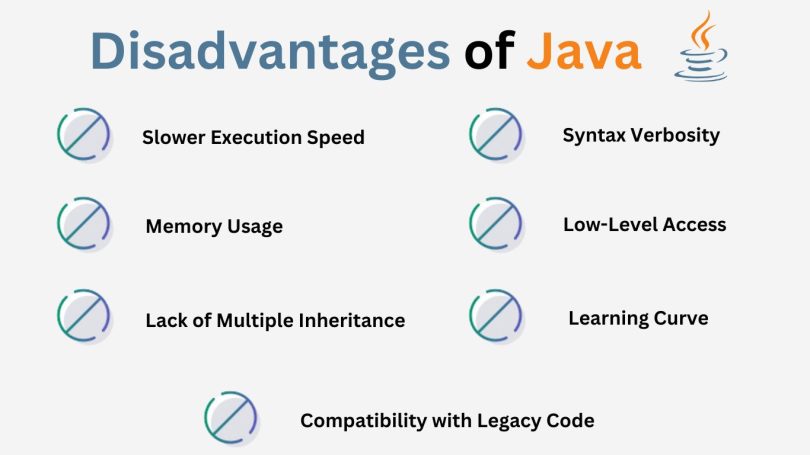Java prevails as a variety of programming languages that are used heavily with a history that spans over two decades. It is applied in many different industries, including enterprise systems and mobile phones like Android and desktop computers. The article under discussion will look deeply into “Java”, describing its weaknesses, consequently providing readers with a good idea of how Java can be used.
Overview of Java:
Making its debut in the fruitful brains of” James Gosling” and his team of researchers at Sun Microsystems back in the mid-1990s, Java was originally developed with consumer electronics devices in mind.
Java, which originally emerged as this platform’s product, has consistently evolved to fit the needs of current contexts, primarily those of the emerging domains of embedded systems and the Internet of Things (IoT). The underlying concept of “Write Once, Run Anywhere” (WORA) of Java in conjunction with a rich feature palette helps the programming language garner widespread deployment over a broad spectrum of different software paradigms.
Java:
Java, sub-categorized as a general-purpose language with object-oriented attributes, is factually an object-oriented programming (OOP) language, not a pure one, as wrongly projected by many. While Java delivers the features of the OOP functionality, this fact that on the one hand the language has primitive data types, on the other hand, it is not significantly distinguished from the quintessential OOP paradigm whose entities are object-oriented.
Although Java is a language which makes use of OOP concepts like polymorphism, classes, objects, inheritance, and encapsulation, these concepts are all empowering for developers. These concepts help to take the source code to the next level – regarding readability, maintainability as well as reusability; therefore, the error susceptibility is reduced at the same time.
Java is such a language which turns out an exceptionally accessible and full-featured one that is backed up by its capabilities for multithreading, functional programming, JShell scripting and facilitating large-scale deployment. Conversely, albeit its outstanding benefits, no programming language is made without any fault. The negativeness of Java has less too many, but some limitations which the Java platform requires consideration.
On the downside for Java, even though it has many advantages, there are certainly aspects that are not so good as well. The salient drawbacks include:
- Slower Execution Speed:
Java’s independent platform, on the one hand, is a blessing, but on the other, it calls for a sacrifice in performance. A common attribute of Java programs is that they are slower to run than C and C++ programs that are written using a native compiler. Even though the hardware advancements and Java Virtual Machine optimizations in modern times have to some extent fixed some performance problems, Java is not always the most appropriate choice for applications that require a lot of low-level manipulation with hardware.
- Syntax Verbosity:
Java’s syntax is often described as verbose, which means that it requires a lot more source code lines compared to languages like Python and Kotlin. Such verbosity might be accompanied by boilerplate code, which might increase the time needed for development and the maintenance overheads, hence, it is important to make a proper decision on what programming language to use for a project.
- Memory Usage:
This battery-powered hardware has a memory constraint and hence cannot meet the RAM requirement of the Java language compared to languages such as C and C++. Developers do need to keep in mind memory restrictions, especially in resource-poor environments, and develop optimizations by integrating with Kotlin or C-family languages.
- Low-Level Access:
The deliberate restriction on lower-level access to system resources in Java causes a security and portability increase which, however, may not be as helpful for the applications requiringintense hardware processing.
- Lack of Multiple Inheritance:
Java supports one level of inheritance, consequently, a class can only extend from a single superclass. It may be good for the developers because it eliminates the challenge of multiple inheritances; it limits the developer’s ability to exploit multiple inheritances to resolve common programming issues.
- Compatibility with Legacy Code:
The changing nature of the Java has resulted in the accumulation of the legacy code in its universe, which makes it rather difficult for developers to maintain and upgrade the older software versions. Adding newer language features and libraries into a legacy application might be difficult, and therefore, this process should be done with care so that planning can be done diligently.
- Learning Curve:
Java’s verbose, strongly typed syntax and expansive library ecosystem contribute to a steep learning curve, particularly for novice programmers. Although less challenging than languages from the C family, Java’s learning curve remains formidable, necessitating substantial time and effort. Familiarity with C or C++ may facilitate Java acquisition, while knowledge of Java can expedite mastery of Kotlin due to its shared features and syntax.
Conclusion:
Despite some drawbacks like verbose syntax, slower execution speed and memory demands, Java’s strengths still outweigh its weaknesses. Its platform independence, object-oriented design, rich libraries and active community continue to make it a powerful and versatile language. With its scalability, maintainability, and strong ecosystem, Java remains a compelling choice for developers building a wide range of applications. This article explored both sides of the coin, providing a balanced perspective for readers to make informed decisions about using Java for their projects.



